Week 6. 3D scanning and printing
Assignment
- group assignment: test the design rules for your 3D printer(s)
- individual assignment: design and 3D print an object (small, few cm) that could not be made subtractively. 3D scan an object (and optionally print it)
group assignment
see FabLab Kamakura's group assignment page.
I also measured the actual size of test model printed by one of lab's printers. Test model was All In One 3D Printer test by majda107 from Thingiverse. The measurement result is here
In my personal assignment, I used Afinia H480 printer, but it was not able to print a test model to the end.
3D scanning
I tried two types of 3D scanning methods. One is the photogrammetry based technique and the other is the depth sensor based one.
Photogrammetry technique is based on a series of photographs. Photogrammetry software can create a geometry and texture mapping from photographs. We can try it with a usual smartphone camera.
Depth sensor technique uses a light source, a light receiver and a color camera. A light source projects an object and a light receiver detects the distortion of the reflected pattern. The distortion varies based on the geometry of an object. Software calculates and generates a geometry of an object based on the degree of distortion. We have to buy a scanning device before trying it.
Depth sensor technique uses a light source, a light receiver and a color camera. A light source projects an object and a light receiver detects the distortion of the reflected pattern. The distortion varies based on the geometry of an object. Software calculates and generates a geometry of an object based on the degree of distortion. We have to buy a scanning device before trying it.
photogrammetry
I tried 3d scanning photogrammetry software, Qlone and Trnio(iOS) and also used AutoDesk ReCap Photo.
Qlone
Qlone uses QR code-like mat. I put an object at the center of the mat, then AR dome shows up on smartphone display and guides me to scan an object. It was easy to use, but AR dome often disappeared when I tried a bigger object, which, I think, might interfere with a camera to detect a QR code-like mat.
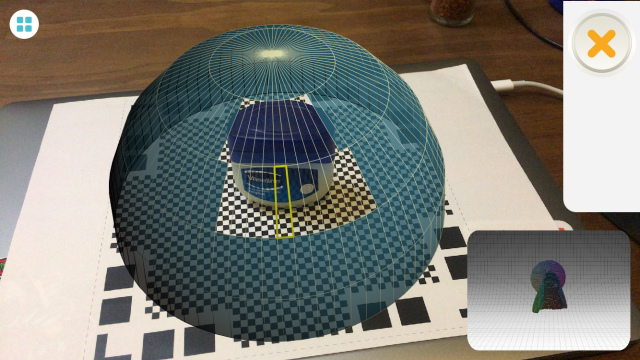
Qlone doesn't allow to export 3D format without payment, so I'll show Sketchfab link.
Trnio
Trnio also guides me to take pictures all around an object. I took a lot of photos of the geodesic dome which I have made in week 4. I uploaded them to merge into a 3D object. The result was quite impressive, but a shaded part was missing. I thought I have to take pictures under more lighting.
download link: sketchfab
ReCap Photo
Trnio allows us to upload up to 60 images. ReCap Photo has no limit, so I uploaded 80 pictures. It took a very long time to process, but the integrated 3D model was fantastic. It has no hole and no distorted part even though most of the images were the same as I used with Trnio.
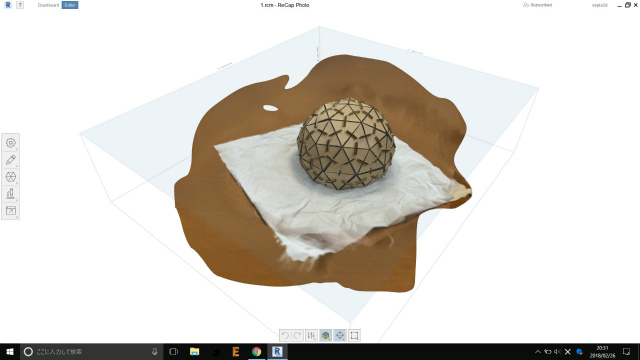
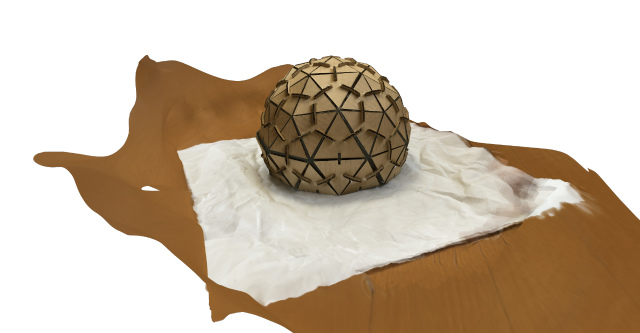
download link: sketchfab
Depth sensor technique
I used SENSE 2 3D Scanner (3DSystems) and scanned a lab member and myself.
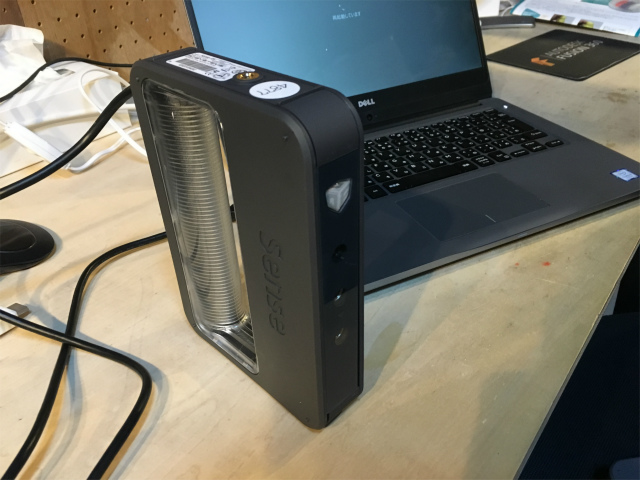
Scanning was difficult for me. I frequently lost tracking and had to start over. Scanning result had a lot of holes. They are underneath the chin (it's because it's in the shade?) and at the top of the head (Is it because black hair doesn't reflect the light?) and, etc.
It also seemed that scanning had difficulty in scanning a person who wear glasses.
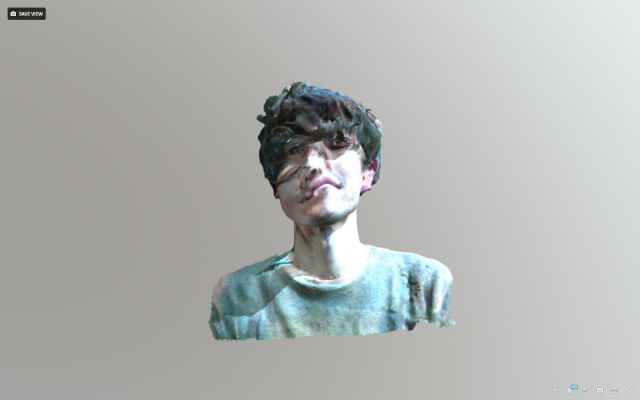
download from sketchfab
We also tried complete scanning to avoid holes, but the result was a mess.
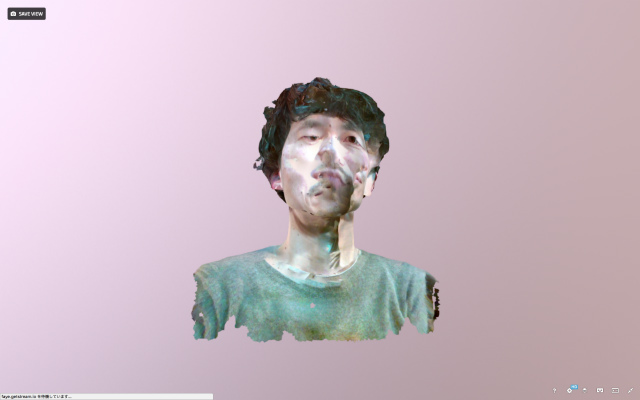
download from sketchfab
After several trials, the best scanning shot was below.
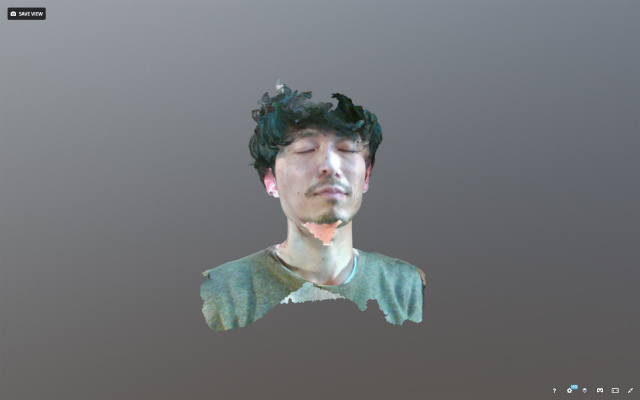
download link: sketchfab
3D printing
A hinge is an object that could not be made subtractively because the moving part cannot be seen from outside and the drill bit cannot reach to machine a material. I chose it because it could be used for the watertight enclosure for my final project.
I modeled it based on this tutorial. In this design, shaft hole is fixed at 3.5 mm, and a shaft is 2.9 mm in diameter. I wanted to know how small the tolerance could be when the hinge was movable.
I redesigned a hinge so that the relation of hole and shaft is parametric, and then I printed them with various shaft and shaft hole ratio and object sizes. 3D printer I used was AFINIA H480. The type of a filament was PLA, and the hotend temperature was 210, and heated bed temperature was 50 in degrees Celsius.
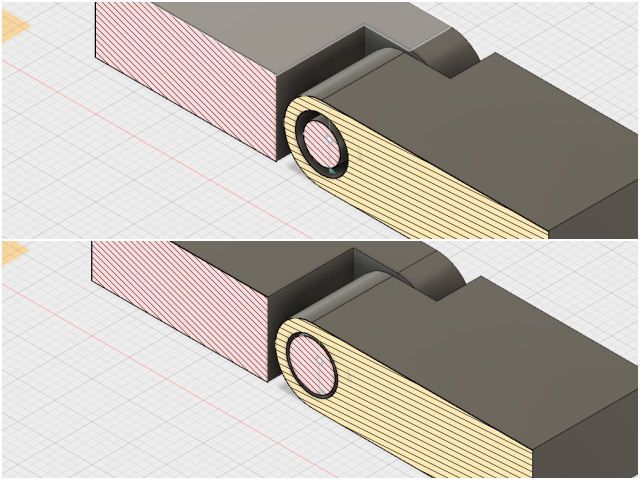

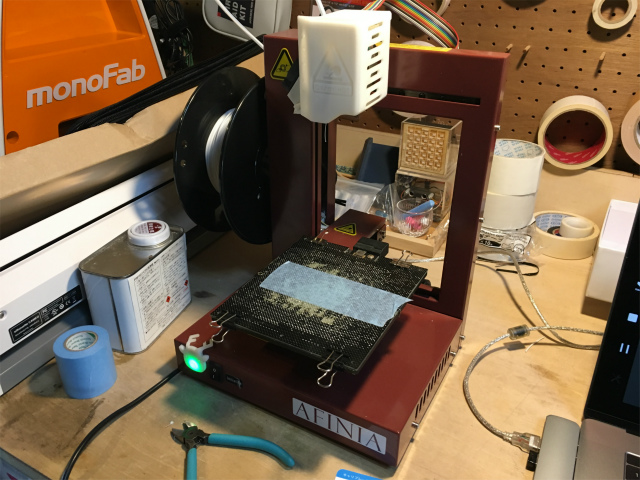
In case of ratio=1.0, hinges weren't movable whatever their size was.
In case of ratio=0.9, a hinge of size 30 mm was broken when I tried to move, and other size hinges were movable.
In case of smaller ratio, hinges were movable whatever their size was, but their movement was not smooth except ratio=0.7 with size 30 mm hinge.
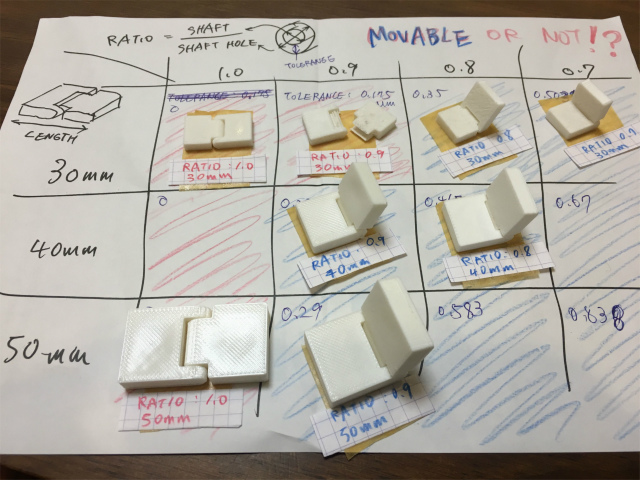
I was amazed that a hinge was movable when the tolerance was as big as about 0.2 mm. It was the almost the same size of layer height.
files
3d printable hinge: fusion 360 format (.f3d)
3d printable hinge: stl format (.stl)